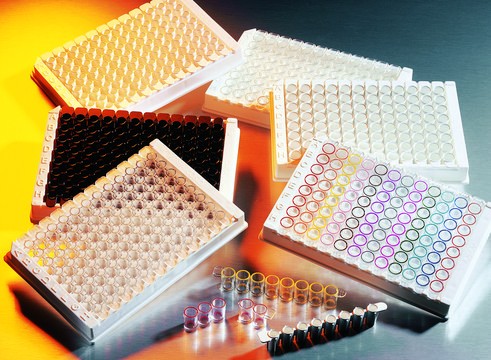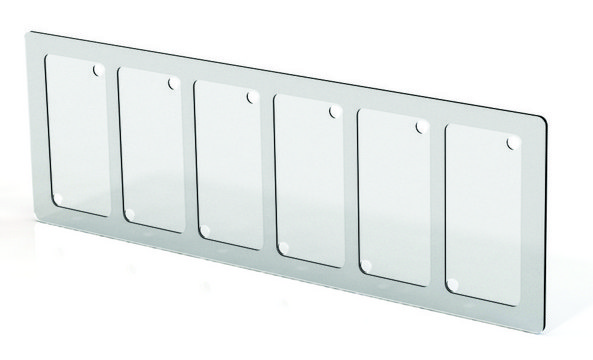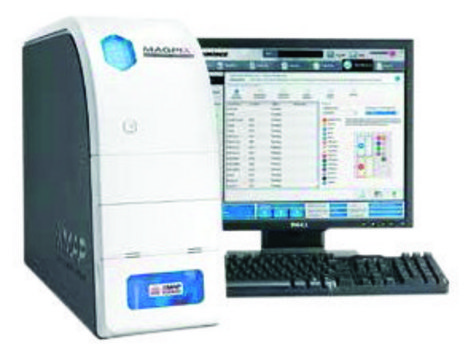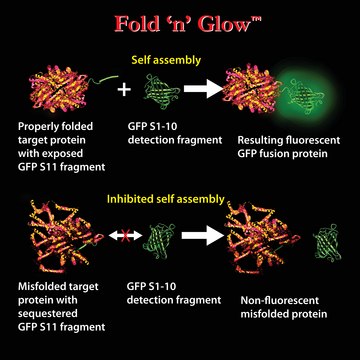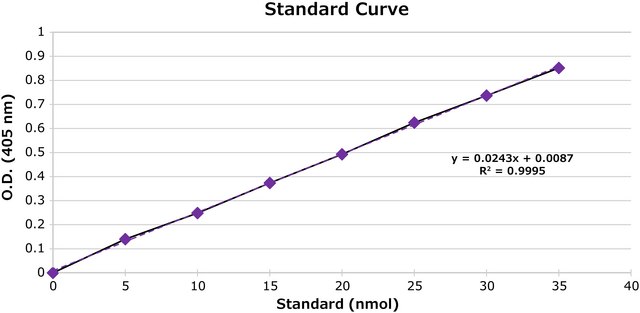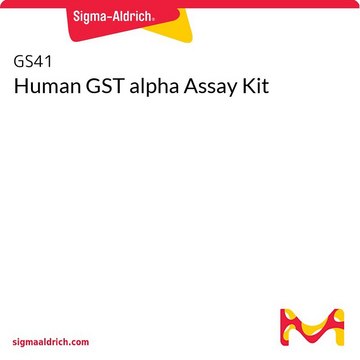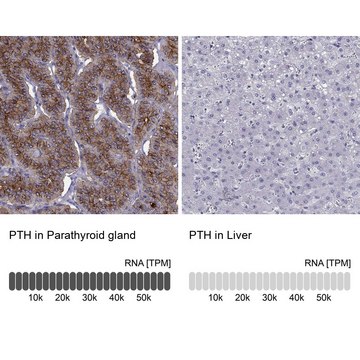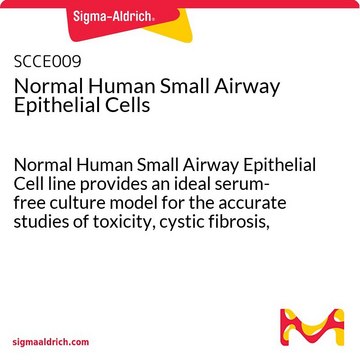GS46
Human GST Pi Assay Kit
Synonym(s):
Glutathione S-Transferase Pi ELISA Assay
Sign Into View Organizational & Contract Pricing
All Photos(1)
About This Item
UNSPSC Code:
12352200
NACRES:
NA.81
Recommended Products
storage temp.
2-8°C
Biochem/physiol Actions
Glutathione S-transferase theta 2 (Gstt2) is an enzyme that in rats is encoded by the Gstt2 gene. Glutathione S-transferases (GSTs) are a family of enzymes that play an important role in detoxification by catalyzing the conjugation of many hydrophobic and electrophilic compounds with reduced glutathione. Based on their biochemical, immunologic, and structural properties, cytosolic and membrane-bound forms of glutathione S-transferase are encoded by two distinct supergene families. At present, eight distinct classes of the soluble cytoplasmic mammalian glutathione S-transferases have been identified: alpha, kappa, mu, omega, pi, sigma, theta and zeta. The GSTs are thought to function in xenobiotic metabolism and play a role in susceptibility to cancer, and other diseases.
Features and Benefits
The human cytosolic Glutathione S-Transferases (GSTs) are expressed as 18 distinct gene products yet they share a common structural morphology. This immunoassay is specific for GST Pi (GSTP) and exhibits less than 1% cross reactivity towards the other 17 human cytosolic GST enzymes. GSTP is considered to be a urinary biomarker for renal cell damage and is localized to the distal convoluted tubules, thin Loop of Henle, and the collecting ducts of the kidney.
This is a standard sandwich enzyme linked immunosorbent assay (ELISA). The plate is pre-coated with anti-GSTP and blocked, ready for the addition of samples and standards. The assay should take about three hours to run, plus any required sample preparation time.
When measuring urine samples, it is recommended to normalize samples to creatinine to account for variations in fluid intake and excretion. Creatinine is produced at a constant rate and can be used to normalize the concentrations of other analytes.
This is a standard sandwich enzyme linked immunosorbent assay (ELISA). The plate is pre-coated with anti-GSTP and blocked, ready for the addition of samples and standards. The assay should take about three hours to run, plus any required sample preparation time.
When measuring urine samples, it is recommended to normalize samples to creatinine to account for variations in fluid intake and excretion. Creatinine is produced at a constant rate and can be used to normalize the concentrations of other analytes.
Disclaimer
For U.S. Customers: Contains mercury; Do not place in trash - dispose according to local, state, or federal laws.
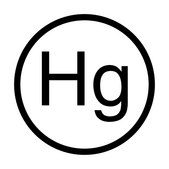

Signal Word
Warning
Hazard Statements
Precautionary Statements
Hazard Classifications
Acute Tox. 4 Oral - Aquatic Chronic 4 - Carc. 2
Storage Class Code
10 - Combustible liquids
Flash Point(F)
Not applicable
Flash Point(C)
Not applicable
Regulatory Information
常规特殊物品
Choose from one of the most recent versions:
Certificates of Analysis (COA)
Lot/Batch Number
Sorry, we don't have COAs for this product available online at this time.
If you need assistance, please contact Customer Support.
Already Own This Product?
Find documentation for the products that you have recently purchased in the Document Library.
Our team of scientists has experience in all areas of research including Life Science, Material Science, Chemical Synthesis, Chromatography, Analytical and many others.
Contact Technical Service